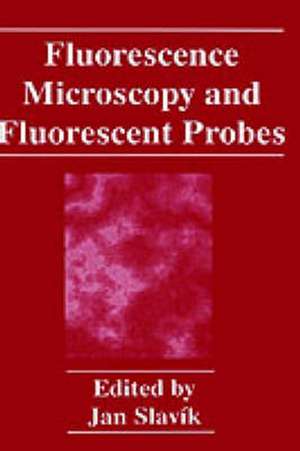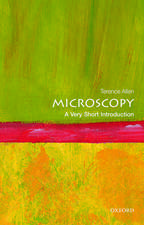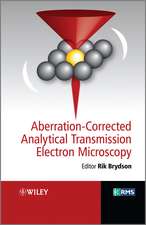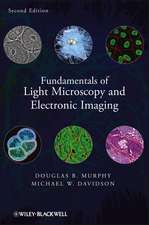Fluorescence Microscopy and Fluorescent Probes
Editat de J. Slavíken Limba Engleză Hardback – 30 oct 1996
| Toate formatele și edițiile | Preț | Express |
|---|---|---|
| Paperback (1) | 940.54 lei 43-57 zile | |
| Springer Us – 11 iun 2013 | 940.54 lei 43-57 zile | |
| Hardback (1) | 952.09 lei 43-57 zile | |
| Springer Us – 30 oct 1996 | 952.09 lei 43-57 zile |
Preț: 952.09 lei
Preț vechi: 1161.08 lei
-18% Nou
Puncte Express: 1428
Preț estimativ în valută:
182.24€ • 198.02$ • 153.18£
182.24€ • 198.02$ • 153.18£
Carte tipărită la comandă
Livrare economică 21 aprilie-05 mai
Preluare comenzi: 021 569.72.76
Specificații
ISBN-13: 9780306453922
ISBN-10: 0306453924
Pagini: 306
Ilustrații: XVIII, 306 p.
Dimensiuni: 155 x 235 x 19 mm
Greutate: 0.64 kg
Ediția:1996
Editura: Springer Us
Colecția Springer
Locul publicării:New York, NY, United States
ISBN-10: 0306453924
Pagini: 306
Ilustrații: XVIII, 306 p.
Dimensiuni: 155 x 235 x 19 mm
Greutate: 0.64 kg
Ediția:1996
Editura: Springer Us
Colecția Springer
Locul publicării:New York, NY, United States
Public țintă
ResearchDescriere
Fluorescence microscopy images can be easily integrated into current video and computer image processing systems. People like visual observation; they like to watch a television or computer screen, and fluorescence techniques are thus becoming more and more popular. Since true in vivo experiments are simple to perform, samples can be directly seen and there is always the possibility of manipulating the samples during the experiments; it is an ideal technique for biology and medicine. Images are obtained by a classical (now called wide-field) fluorescence microscope, a confocal scanning microscope, upright or inverted, with epifluorescence or transmission. Computerized image processing may improve definition, and remove glare and scattered light signal. It also makes it possible to compute ratio images (ratio imaging both in excitation and in emission) or lifetime imaging. Image analysis programs may supply a great deal of additional data of various types, starting with calculations of the number of fluorescent objects, their shapes, brightness, etc. Fluorescence microscopy data may be complemented by classical measurement in the cuvette yr by flow cytometry.
Cuprins
Fluorescence Microscopy and Fluorescent Probes: Fluorescent Microscopy: State of the Art (B. Herman). Fluorescence Lifetimeresolved Imaging Microscopy: A General Description of Lifetimeresolved Imaging Measurements (R.M. Clegg, P.C. Schneider). Ionsensitive Fluorescent Probes: Distribution of Individual Cytoplasmic pH Values in a Cell Suspension (P. Cimprich, J. Slavik). The Effect of Lysosomal pH on Lactoferrindependent Iron Uptake in Tritrichomonas foetus: (M. Gregor et al.). Membrane Potentialsensitive Fluorescent Probes: Is a Potentialsensitive Probe disc3(3) a Nernstian Dye?: Timeresolved Fluorescence Study with Liposomes as a Model System (P. Herman et al.). Kinetic Behavior of Potentialsensitive Fluorescent Redistribution Probes: Modeling of the Time Course of Cell Staining (J. Vecer, P. Herman). Fluorescent Probes for Nucleic Acids: Requirements for a Computerbased System for FISHapplications (W. Malkusch). Fluorescent Labels, Fluorescent and Fluorogenic Substrates: Fluorogenic Substrates Reveal Genetic Differences in Aldehydeoxidating Enzyme Patterns in Rat Tissues (J. Wierzchowski et al.). Digital Image Analysis: Rapid Automatic Segmentation of Fluorescent and Phasecontrast Images of Bacteria (M.H.F. Wilkinson). 37 additional articles. Index.











